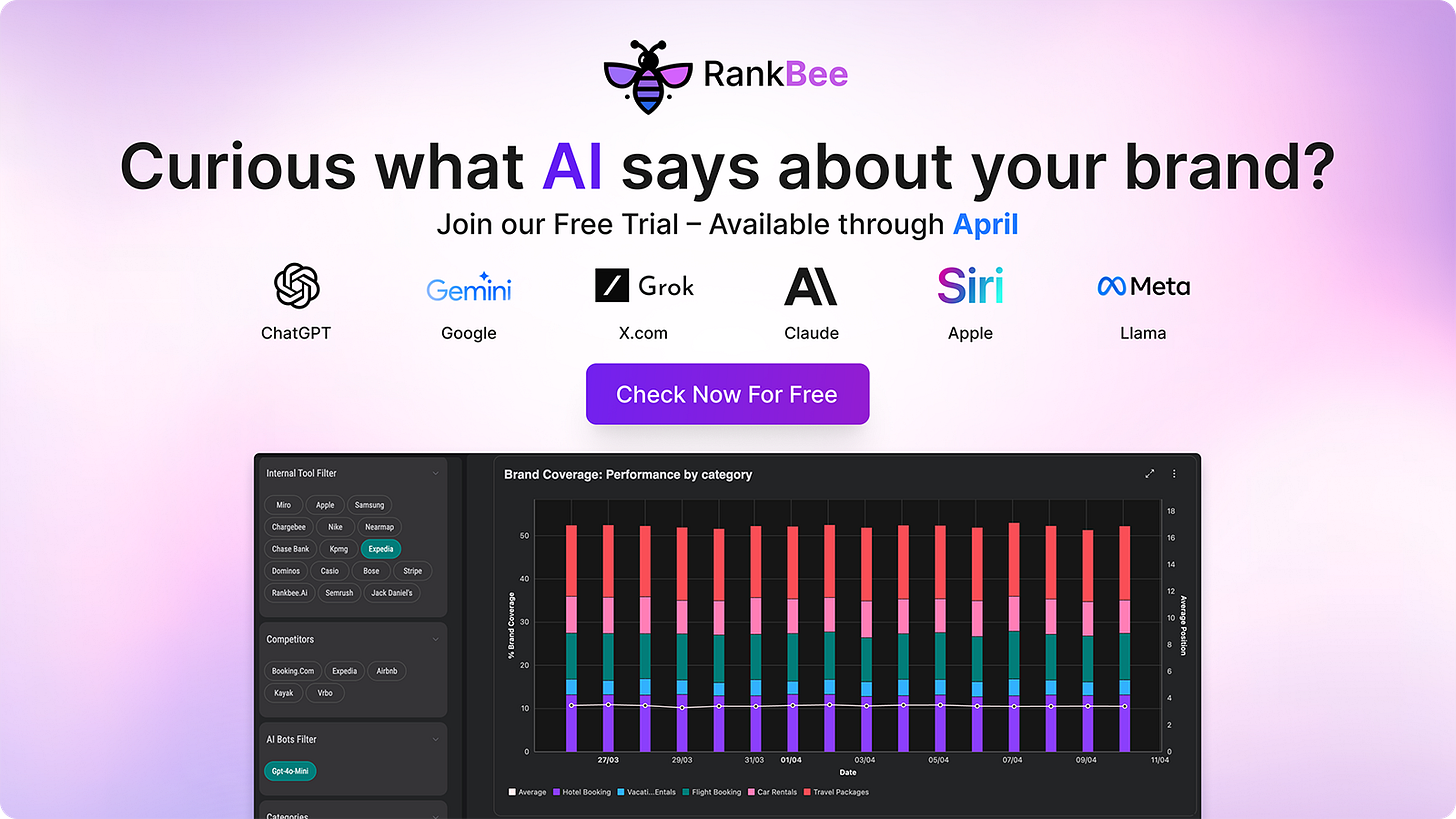Slack community?
Slack communities can fuel growth, but only if you avoid this trap
👋 Hey, I’m George Chasiotis. Welcome to GrowthWaves, your weekly dose of B2B growth insights—featuring powerful case studies, emerging trends, and unconventional strategies you won’t find anywhere else.
This GrowthWaves note is brought to you by RankBee
AI search is becoming part of the buyer journey. If your brand doesn’t show up in ChatGPT, Gemini, Grok, or Claude, you’re invisible.
That’s where RankBee comes in.
They help you track and improve your visibility across AI models.
It's not SEO, not keywords, but actual presence inside the interfaces people are already using to research and make decisions.
This is a new category, some people call it GEO (Generative Engine Optimization).
I invested because I believe in this space and, more importantly, in what Aris and his team are building.
They’re early, they’re focused, and they’re building fast.
If you care about brand visibility beyond Google, go check it out:
(Let them know I sent you.)
The tech stack is changing.
New tools are popping up here and there.
Some of them survive and live up to their potential.
(And their founders’ and investors’ expectations.)
Others (usually) fade away silently.
The ones that survive and thrive introduce new ways of doing things.
We should pay attention to these things, even if they seem mundane.
Context
Several SaaS companies use Slack communities to engage with their audience and customers.
There are several benefits to that:
Create a sense of belonging and cultivate a community feeling
Allow the customer support team to provide help in real time
Give the product team visibility into what interests users
Get product feedback and refine the product strategy
Create a sense of exclusivity for outsiders
And it makes sense why you’d want to run your community on Slack, especially if you’re a martech tool.
Most of your customers already use it as their chat-based collaboration tool.
Plus, it’s free up to a certain point.
Similarly, if you’re a tool that targets tech folks, building (or hosting) your community on Discord would make more sense.
Tools aside, the value of these communities lies in how they’re used for growth.
Certain companies get it and use their Slack communities as a growth vehicle.
Examples
You’re probably already part of at least one Slack community tied to a product you use.
And I do not doubt that you can find more examples if you search for them.
So, what I’ll share is two (personal favorite) examples.


